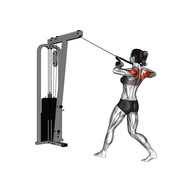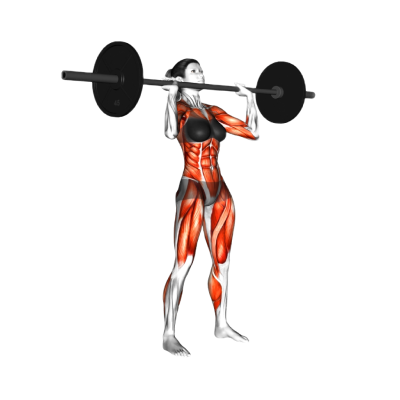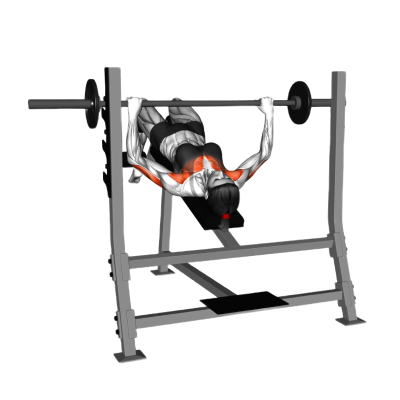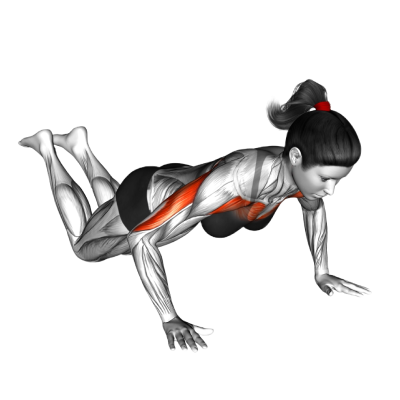What is Straight Arm Pulldown
Straight arm lat pulldowns are an isolation exercise that targets your latissimus dorsi (lats) muscles, the large, winglike muscles that span across your upper back. For this exercise, you use a cable machine with a straight bar attachment. Pull the bar down toward your thighs by driving from your lats, keeping your arms straight but not locked out. This exercise isolates your lats to help you build a stronger and wider back. It also activates your triceps and core as secondary movers that help keep you stable.
How-to
- To do a straight arm pulldown, face a cable machine with a straight bar attachment set at the top of the rack. Hold onto the bar with a shoulder-width overhand grip, keeping your arms slightly bent in front of you.
- Pull the cable down until the bar almost touches your thighs. Keep your elbows fixed throughout the motion. Briefly hold.
- Slowly return to the starting position.
Muscle Worked
Primary Muscle Groups


Lats
Your latissimus dorsi, also called the "lats," help you to move your arms and keep your shoulders stable.

Shoulders
Your shoulders are ball-and-socket joints which connect your arms to your torso

Lower Back
The low back helps stabilize your spinal column and connects your upper body to your pelvis.

Upper Back
Lie on the floor and place a foam roller below your traps and above your shoulder blades.Secondary Muscle Groups
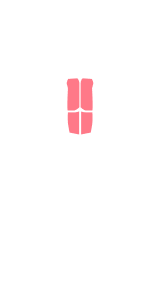

Abs
"Abs" refers to your abdominal muscles, which sit at the front of your trunk between your ribcage and pelvis

Forearms
The forearms help you grip objects and move your hands, wrists and fingers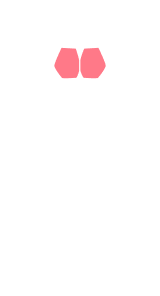

Chest
Your chest helps you move your arms across your body and up and down while stabilizing the shoulders

Traps
Lie on the floor and place a foam roller below your traps and above your shoulder blades.Pro Tips
- Engage Your Lats from the Start: Start each rep by activating your lats rather than pulling with your arms. Imagine you’re squeezing your armpits and pulling your shoulder blades together (think about the feeling of squishing an orange between your shoulder blades). Drive your elbows down toward your hips, don’t just pull the bar. Visualizing can help you target your lats and improve muscle activation.
- Lean Slightly Forward: A slight forward lean at the hips (not your lower back) will help you stretch deeper through your lats at the top of this exercise. Keep your core tight so you stay stable and don’t arch your back. That way, you isolate your lats and don’t put as much of a strain on your lower back, which is an easy area to injure.
Equipments
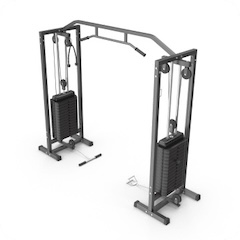
Cable Machine
This pulley machine attaches to a steel frame and offers weighted resistance for pulling exercisesBenefits
- Isolates Your Lats: Straight arm lat pulldowns are a useful back isolation exercise for targeting the latissimus dorsi. They help you build a stronger and more defined upper back. If you’re looking for a want a wider and overall more aesthetically pleasing upper body shape, this is especially helpful.
- Stable Shoulders and Core: Because this exercise uses your shoulders and core as stabilizer muscles, you’ll get more upper body control the more you train and improve at straight arm pulldowns. Core and shoulder stability translates directly to better performance in other compound exercises like deadlifts or compound shoulder exercises like rows.
Variations
The following exercises target the same primary muscles using the same equipment:
Alternatives
The following exercises target the same primary muscles using different equipment:
Warm Up & Cool Down
Warm Up
- Use a lighter load on the lat pulldown machine to warm up. You want this to be mostly an activation load to get yourself thinking about range of motion and form. Although there will be some strength effort involved, use a load that doesn’t feel challenging but just allows you to practice the movement pattern of your lift before your heavier work.
- Hold a resistance band and pull it apart. When your hands are separated at their furthest point, think about squeezing your shoulder blades together as much as you can so you engage your upper back, lats and shoulders.
- Kneel on all fours and alternate between rounding out your upper back, sending your gaze down, and looking up while pulling your chest forward and bringing your shoulder blades together. This dynamic stretch is great for spinal mobility and shoulder blade movement while you warm up your back.
Cool Down
- Kneel on the floor, crawl your hands forward and straighten your arms. Sink your hips back, sit on your heels to stretch your lats, and let your back release and relax.
- Place one arm on a wall or pole, lean forward, and gently stretch the lat muscles on each side. You can also do this with both arms at once if you prefer.
- Pull one arm across your body to stretch your rear deltoids (backs of your shoulders) and your upper back. This is a good tension-release technique after pulldowns.
FAQ


Get fit with Flex
Build muscle & lose weight fast for free.
Available on iPhone + Apple Watch

